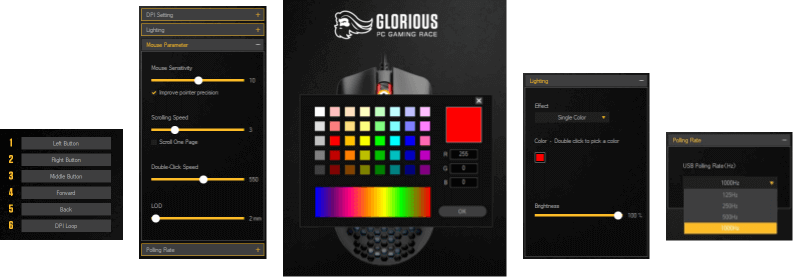
- If you occasionally want to access your home Mac from afar, whether it be to reach shared files, access a Web server, check in on a Web cam, or any other such purpose, Port Map is a free solution.
- May 26, 2020 The adapters and cables in this article work with these Mac computers and iPad Pro devices: Mac models that have Thunderbolt 3 ports. These ports support both Thunderbolt 3 and USB-C connections. Mac models that have a USB-C port. This port supports USB-C connections. IPad Pro models that have a USB-C port. This port supports USB-C connections.

If you have a PC device with a connection type that a Mac does not support directly, you might still be able to connect your device using an adapter. By adding the adapters you need to your list of items to buy, you’ll be able to get your new Mac setup running quickly, with less hassle. Macs no longer support the following types of connections, but you can still use them with an adapter.
Before you buy any adapter, make sure that the manufacturer supports the latest version of Mac OS X. Many don’t support Mac at all, and some only support Mac OS 9 or old versions of OS X. Also realize that when an adapter maker says that it supports OS X, it doesn’t guarantee that your printer or scanner will work perfectly. If you’re buying new equipment, avoid peripherals that require an adapter, if at all possible.
May 13, 2016 Port Forwarding Wizard is a very simple piece of port-forwarding software that runs on OS X. It supports Snow Leopard, Lion, and above. You can easily add port-forwarding entry into router by using our tool. The Port Forwarding Wizard communicate with router by using UPnP standard.
Apple Mac Ports
Apple Desktop Bus (ADB): The way older Mac keyboards and mice connected back in the 20th century.
Camera memory cards: Some PCs come with slots where you can plug in the memory cards used in digital cameras and some camcorders. Many different types are available. USB adapters that accept most card types are inexpensive and readily available. (But it’s usually easier to hook up your camera via a USB cable.)
Fiber Distributed Data Interface (FDDI): A high-performance data network that sends information over optical fibers instead of wires. You’ll need a Mac Pro or Xserve and a PCI Express FDDI card, which Apple sells and supports.
High-Definition Multimedia Interface (HDMI): HDMI input is standard on most flat-panel and high-definition televisions. While many also allow analog input, HDMI is the input to use if you want the video quality you’re paying for. Apple sells adapters that let you connect a Mac to an HDMI port.
Musical Instrument Digital Interface (MIDI): This is the music-industry standard for connecting musical keyboards (the ones with black and white ivories, not the kind you write e-mail on). Apple’s Core Audio offers strong MIDI support in software. Many new MIDI devices use USB or FireWire interfaces and work directly with Macs. Older instruments may have a 5-pin DIN connector and, you’ll need an adapter.
Modem: Macs no longer come with a dialup modem port (the type that you can plug a phone line into). Apple sells a modem built into a short cable that plugs into a USB port for about $50. Other USB modems are on the market, some cheaper, but make sure that they support Mac OS X.
Parallel printer (IEEE-1284): If you have a printer you love that only talks parallel port, Keyspan.com makes a USB–to–parallel port adapter that supports OS X.
PS/2: The second-generation IBM PC introduced these ports for connecting keyboards and mice. Lots of PCs still come with PS/2 keyboards and mice.
RCA audio: This simple connector is common on home audio systems. Radio Shack sells a cheap cable that plugs into your Mac’s 3.5-mm stereo audio output and has a pair of RCA plugs at the other end that can go into your stereo.
Small computer system interface (SCSI): Apple popularized this interface for hard drives with the Mac Plus, and SCSI (pronounced scuzzy) is still used in high-end applications. However, Apple has long since adopted the Serial ATA standard used by most PC manufacturers. USB-SCSI adapters are available, but they generally do not work with OS X. Ratoc Systems, Inc. sells a FireWire-to-SCSI adapter that it claims does work with OS X. It’s a tad pricey, and it uses the latest UltraSCSI connector, so you may need special cable for first-generation SCSI devices
Serial port (RS-232, RS-422): Apple largely dropped serial ports in favor of USB ports when it introduced the first iMac. (A serial port is provided on the Xserve’s back panel because the server world expects one.) Several companies sell USB–to–serial port adapters. (Try Keyspan.com and Serialio.com.) You can also buy Bluetooth-to-serial adapters that let you control serial devices without running wires.
S-Video: Apple sells an inexpensive adapter that converts your Mac’s video output to S-Video and composite video (an RCA jack), the two most common analog television standards. With one of these adapters, you can show your photo collection on any TV with a video input jack.
Video Graphics Array (VGA) and Super VGA: VGA and SVGA are by far the most popular ports for connecting older analog computer monitors. Apple offers adapters that connect VGA/SVGA displays and other devices to the Mac’s video output port. This adapter is free with some Mac models and an extra-cost (about $20) option with others.
Comments are closed.